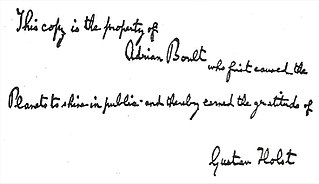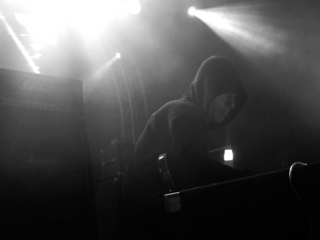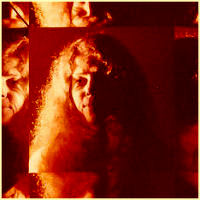Wendy Carlos is an American musician and composer best known for her electronic music and film scores.

Compact Disc Digital Audio, also known as Digital Audio Compact Disc or simply as Audio CD, is the standard format for audio compact discs. The standard is defined in the Red Book, one of a series of Rainbow Books that contain the technical specifications for all CD formats.

Steve Roach is an American composer and performer of ambient and electronic music, whose recordings are informed by his impressions of environment, perception, flow and space. His work has been influential in the trance and new-age genres.
Die Form is a French post-industrial and electronic band formed in 1977-78. The name 'Die Form' means '(the) form/shape' in German, like the Bauhaus diary, and is a play on the English homonym 'deform' and on the French homonym 'difforme' (deformed).

Liner notes are the writings found on the sleeves of LP record albums and in booklets that come inserted into the compact disc jewel case or cassette j-cards.

In digital recording, an audio or video signal is converted into a stream of discrete numbers representing the changes over time in air pressure for audio, or chroma and luminance values for video. This number stream is saved to a storage device. To play back a digital recording, the numbers are retrieved and converted back into their original analog audio or video forms so that they can be heard or seen.

Final is a project of English musician Justin Broadrick, creator of the band Godflesh, which he started when he was 13 years old. Unlike Godflesh, Final is primarily electronic in nature, taking on a space-like, dark ambient sound.
Hearts of Space is an American weekly syndicated public radio show featuring music of a contemplative nature drawn largely from the ambient, new-age and electronic genres, while also including classical, world, Celtic, experimental, and other music selections. For many years, the show's producer and presenter, Stephen Hill, has applied the term "space music" to the music broadcast on the show, irrespective of genre. It is the longest-running radio program of its type in the world. Each episode ends with Hill gently saying, "Safe journeys, space fans ... wherever you are."

Constance Mary Demby was an American musician, composer, painter, sculptor, and multimedia producer. Her music fell into several categories, most notably new age, ambient and space music. She is best known for her 1986 album Novus Magnificat and her two experimental musical instruments, the sonic steel space bass and the whale sail.
Michael Stearns is an American musician and composer of ambient music. He is also known as a film composer, sound designer and soundtrack producer for large format films, theatrical films, documentaries, commercials, and themed attractions.
Emerald Web was an American musical duo, made up of the husband-wife team of Bob Stohl and Kat Epple. Founded in 1978 and active through the 1980s, Stohl and Epple were pioneers in New Age, ambient, and electronic music.

Neuronium is a Spanish electronic music group created by Michel Huygen in 1976. The group has released over 40 albums since then on the Neuronium/Michel Huygen label.

Lullaby for the Hearts of Space (1980) is an album by the American ambient musician Kevin Braheny.
The Magnificat is a Christian canticle found in the Gospel of Luke.

Polar Shift: A Benefit for Antarctica is a compilation album of new-age and ambient music, released in 1991. A project of the EarthSea Institute, a portion of its proceeds was pledged "to The Cousteau Society and other environmental organizations working to establish Antarctica as a Natural Reserve dedicated to peace and science." It featured 13 tracks from various artists, being in CD track list order: Yanni, Chris Spheeris, Constance Demby, Steve Howe, Paul Smith, Vangelis, Enya, Kitaro, Suzanne Ciani, John Tesh, and Jim Chappell. The compilation was co-produced by Anna Turner and Terence Yallop, and was released by Private Music on cassette and CD.
Cidny Bullens is an American singer-songwriter, who is best known for serving as backup vocalist on tours and albums with Elton John and Rod Stewart, providing vocals on the soundtrack of the 1978 feature film Grease, and for nine critically acclaimed solo albums. In 2012, Bullens publicly came out as a transgender man and changed his name to Cidny Bullens.
Valley Entertainment is an American independent record label and music distributor based in New York City, United States. The company was founded in 1994 by Barney Cohen and Jon Birge. In 2001, it acquired the prestigious back catalogue of space, ambient, and new-age music from Hearts of Space Records. As of 2017, it has a catalogue of about 375 releases.

Anna Turner was an American producer and administrator. Turner is best known as the original partner of Stephen Hill for launching the space music radio show Hearts of Space: she was its original radio co-producer (1973–1987) and early co-host (1974–1986), as well as co-founder and record co-producer (1984–1990s) of the associated label Hearts of Space Records.

Sacred Space Music is the third album of new-age composer Constance Demby.
Robert Rutman was a German visual artist, musician, composer, and instrument builder. Best known for his work with homemade idiophones in his Steel Cello Ensemble, Rutman is regarded as a pioneer of multimedia performance in his mixing of music, sculpture, film, and visual art.











